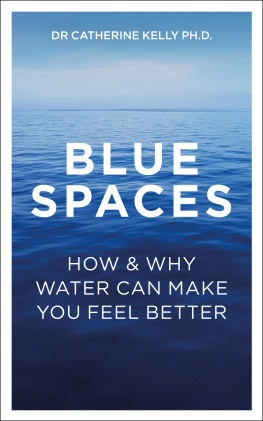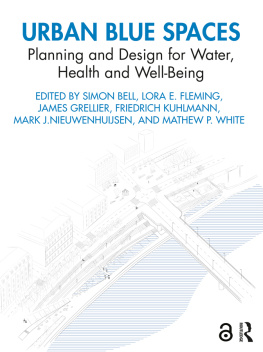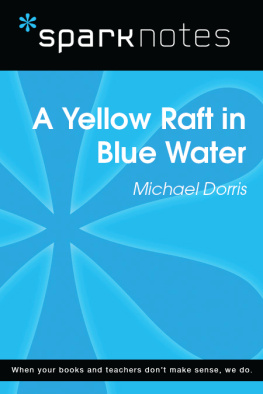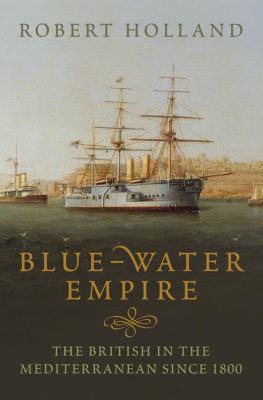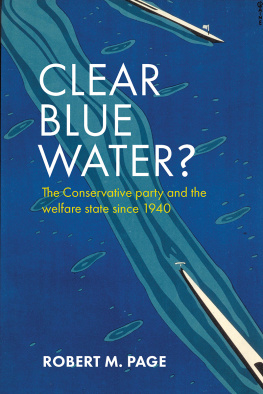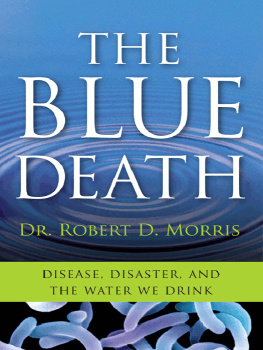Contents
Guide
BLUE SPACES

ABOUT THE AUTHOR
Dr Catherine Kelly has worked as a geography academic and wellbeing practitioner for many years. She has taught in several universities during the course of her career, including the University of Greenwich, University of Brighton, Sussex University and the Galway-Mayo Institute of Technology. She has a second degree in stress management, and professional diplomas in mindfulness training.
Today, she is the director of CoreJourneys and ChillSquad, her wellbeing organisations, and of WildBlue School, Brighton, a coastal education and wellbeing project. Dr Kelly is also a board member of the UNESCO Biosphere (Brighton Hove Lewes Downs partnership), which promotes all aspects of sustainable development, learning and living. She is passionate about the sea, learning, nature and helping both adults and children to enjoy, explore and relax outdoors in all types of bluespace. She lives in Brighton and is the mother of two adventurous young boys.
BLUE SPACES
How and Why Water Can Make You Feel Better
Dr Catherine Kelly Ph.D

A Trigger Book
Published by Welbeck Balance
An imprint of Welbeck Publishing Group
20 Mortimer Street
London W1T 3JW
First published by Welbeck Balance in 2021
Copyright Catherine Kelly, 2021
Catherine Kelly has asserted her right under the Copyright, Designs and Patents Act, 1988, to be identified as the Author of this work.
All rights reserved. No part of this publication may be reproduced, stored in a retrieval system, or transmitted in any form or by any means, electronically, mechanical, photocopying, recording or otherwise, without the prior permission of the copyright owners and the publishers.
A CIP catalogue record for this book is available from the British Library
eBook ISBN 9781789562859
Typeset by Lapiz Digital Services
Note/Disclaimer
Welbeck Balance encourages diversity and different viewpoints. However, all views, thoughts, and opinions expressed in this book are the authors own and are not necessarily representative of Welbeck Publishing Group as an organisation. All material in this book is set out in good faith for general guidance; no liability can be accepted for loss or expense incurred in following the information given. In particular, this book is not intended to replace expert medical or psychiatric advice. It is intended for informational purposes only and for your own personal use and guidance. It is not intended to diagnose, treat or act as a substitute for professional medical advice. The author is not a medical practitioner nor a counsellor, and professional advice should be sought if desired before embarking on any health-related programme.
www.welbeckpublishing.com
For my mother, Dympna Kelly,
whose loss led me to the healing power of bluespace.
Important note:
You can adapt any of the exercises in this book to suit your own comfort level with the water. You dont need to be a proficient swimmer to do them, but we all have our own preferences for water depth, conditions and levels of activity. Always behave safely and know your own limits. On any given day, our mood, tiredness levels, physical ability, and even what we have eaten (or not) can affect how we interact with the water.
If you are wild swimming, make sure you can get out easily (and do not swim alone in rivers), assess your own swimming ability in relation to the water conditions, ensure there are no obscured hazards underwater and, where necessary, check water pollution levels. A good resource for all bluespace safety precautions can be found at www.wildswimming.co.uk.
CONTENTS
INTRODUCTION
Bluespace is a wonderful term used to describe the watery places in our world. Even saying the word bluespace makes me feel happy and calm! If you have picked up this book, you are likely to be another water-lover and interested in bluespace too. For some of us, this may be the coast, rivers or lakes near where we live; for others, these will be places where we like to go on holiday or visit at weekends. And for some, it may be our evening bath or morning shower that makes us feel human. Whatever your own preferred bluespace is, this book examines why and how water makes us feel good. We will be looking at some of the science around water and wellbeing not just the physical factors, but the psychological and social aspects also. I talk about my own bluespace encounters and we will hear from lots of ordinary people who tell us about how water has helped improve their wellbeing, both in times of joy and in times of need.
Ive worked as a geography academic for years, but over a decade ago turned my interest to becoming a wellbeing practitioner as well. This relationship between nature especially watery landscapes and wellbeing fascinates me. What is it about water that helps us come back to ourselves? This book aims to give you insights into bluespaces, how they have helped other peoples wellbeing and how they can help yours. There are lots of exercises you can enjoy, even in your own bath or shower at home. There are also shorter Try This suggestions in many of the chapters: little things you can do when you are in or near water, and ways of simply reframing your thoughts in bluespace.
When doing the exercises in this book, I recommend that you read through them first, maybe a couple of times, so you can then do the practice without having to refer to each step although it is entirely up to you. Some people may find it easier to read and record the steps of an exercise on their phone, and then just play them back. (For anyone listening to an audio version of this book, please ignore this suggestion!) It doesnt matter if you miss a step like cooking, some people prefer to follow a recipe exactly, while others glance over it and ad-lib a bit! Do what works for you. The intention behind the exercises is to really connect with the water and with yourself, in a way that enhances your wellbeing. These are things you can do again and again, either alone or with others.
Many of the exercises can be adapted to the space you are in and will work well with all kinds of bluespaces, so be creative as you get familiar with them. Each experience may be different for you, depending on who you are with, how you are feeling, or what the weather or water itself is doing. That is the beauty of water: no encounter can ever be the same, because water itself changes constantly. Having said that, there is no need at all to do any of the exercises if this is not your thing; the book is designed to talk you through why bluespace itself matters and is therapeutic on so many different levels.
A gentle word of caution when doing any of the outdoor bluespace exercises: please take good care and know your own limits. Some of you will be experienced and fit wild swimmers, while others may be dabbling in outdoor swimming for the first time, or perhaps in your first winter of wild swimming. The Useful Resources section at the end of this book offers information on where you can go for specific helpful safety advice. There are a plethora of online groups too who advise on social media about using wetsuits, swimming gear and so on. Wherever you are at, just go gently, be aware of yourself and others, and respect the water in every sense.

